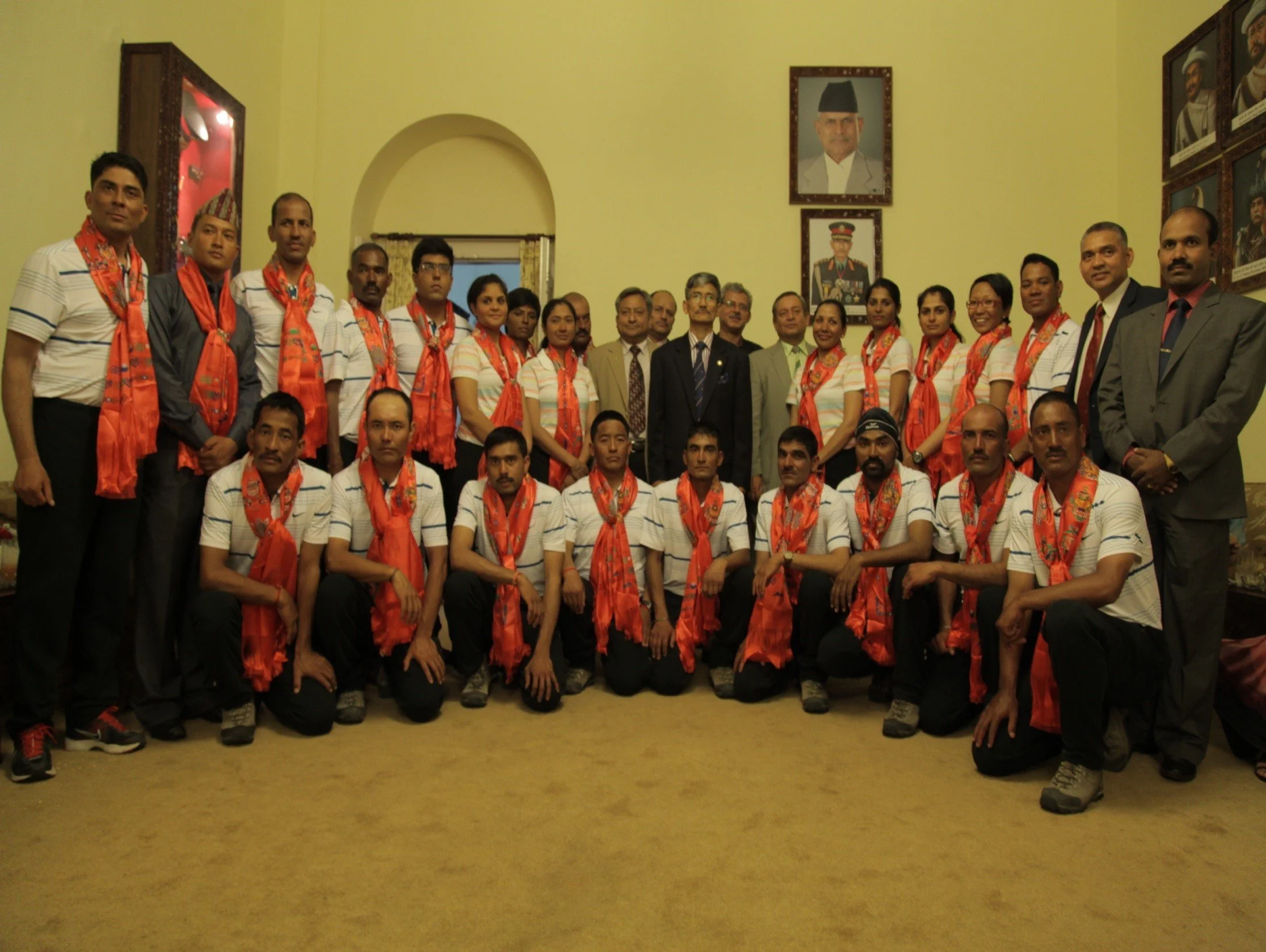To Be on Top of the World
Mt Everest – a dream of many keen mountaineers and the world's tallest spot to see the world from.
As a person, I am a trained mountaineer and a certified mountaineering instructor. However, this lofty mountain was never on my bucket list. It’s not just the cost to climb, but also the risk to climb that makes it far from reach. Mountaineering is not a sport for weak hearts for sure, and the ones who love it know what the adrenal rush is, with just the thought of climbing another peak.
My journey started in 2010 while serving in the Indian Military. I volunteered to go through the selection and trials for Mt Everest. Those two years were tough, but they made me tougher than ever before. It’s not just the physical strength I am talking about but also the mental strength to not give up. After two long years and getting shortlisted by 44 women officers I was one of the 7 women officers who were selected to climb the tallest mountain in the world.
We started the journey from Delhi, India to Kathmandu, Nepal in March 2012.
All the preparations and planning were done to make sure everything was taken care of, in terms of things we would need during the expedition. We also learned some conversational Nepali, to converse with our Sherpas. For those who don’t know who Sherpas are, they are one of the toughest types of people I have ever met in my life. They are sweet, funny, and caring and they are the right people fit for the job as buddies during the climb.
For every mountaineer who comes for the climb, their journey starts from Lukla. However, for us, it started from where Sir Edmund Hillary started his journey back in 1953. For the people who want to see heaven while they are alive, you must go for this trek to Basecamp at least once in your lifetime. There are beautiful valleys and grassy meadows, Tibetan monasteries to feel tranquility, and sounds of the birds and people passing by to make it loud.
Nature is at its best showing all beautiful colors and shades.
After 17 long trekking days, we reached the base camp and started our journey of acclimatization.
It is necessary to get acclimatized, as it helps your body to get adjusted to the thin air and the altitude. The first deadly obstacle to encounter is Khumbu Icefall. It’s an unstable mass of ice that shifts and moves around three meters every day. Some wide-open crevasses and seracs are tall enough for one to look up and see only half of it. One of the adventures we had here was encountering an avalanche.
After Camp-1 comes Camp-2, which is in a flat area. However, it's full of hidden crevasses.
From Camp-2 to Camp-3 comes Western Cwm. It is difficult to understand that at an altitude of almost 6500 meters and on a glacier we were in our half sleeve t-shirts. The temp in that area was so high that we had to strip down to our t-shirts. After crossing that came the real challenges, a vertical climb of a gradient of almost 60-70 degrees.
To add to the complication was the downpour of rocks from the Lothse face. Camp-3 is almost where you can’t think straight. It's here when you realize what oxygen does to your body and brain and once deprived, how it affects your behavior. After all the tedious climb up and down, which we did for almost 40 days, came the time for the final summit.
We started from Camp-4 which is on the South Col of Everest's face at 8:00 PM. It was pitch dark, but headlights could be seen like fireflies blinking through the route.
It was cold and tough, but we were tougher than we thought. With two oxygen cylinders and a basic survival kit, we started our journey and slowly but surely reached the top of the world on May 26th at around 5:45 AM. For the first time in my life, I saw the sun rising from below the clouds and saw the shadow of the tallest mountain against the canvas of the world. The colors were so vivid, no one can truly capture the real moment.
My heart was pounding extremely fast and all I could think of was reaching where I had only dreamt off. Even when I tell my story today, after a decade, I still get overwhelmed with gratitude and thank the mountain Chomolungma (Goddess mother of the world).
After this climb, I can say with pride that I can use the phrase “on the top of the world” literally, and have some fascinating stories to tell my kids and grandkids!
“Mountains are not stadiums where I satisfy my ambition to achieve, they are the cathedrals where I practice my religion...I go to them as humans go to worship. From their lofty summits I view my past, dream of the future and, with an unusual acuity, am allowed to experience the present moment...my vision cleared, my strength renewed. In the mountains I celebrate creation. On each journey I am reborn… ”














